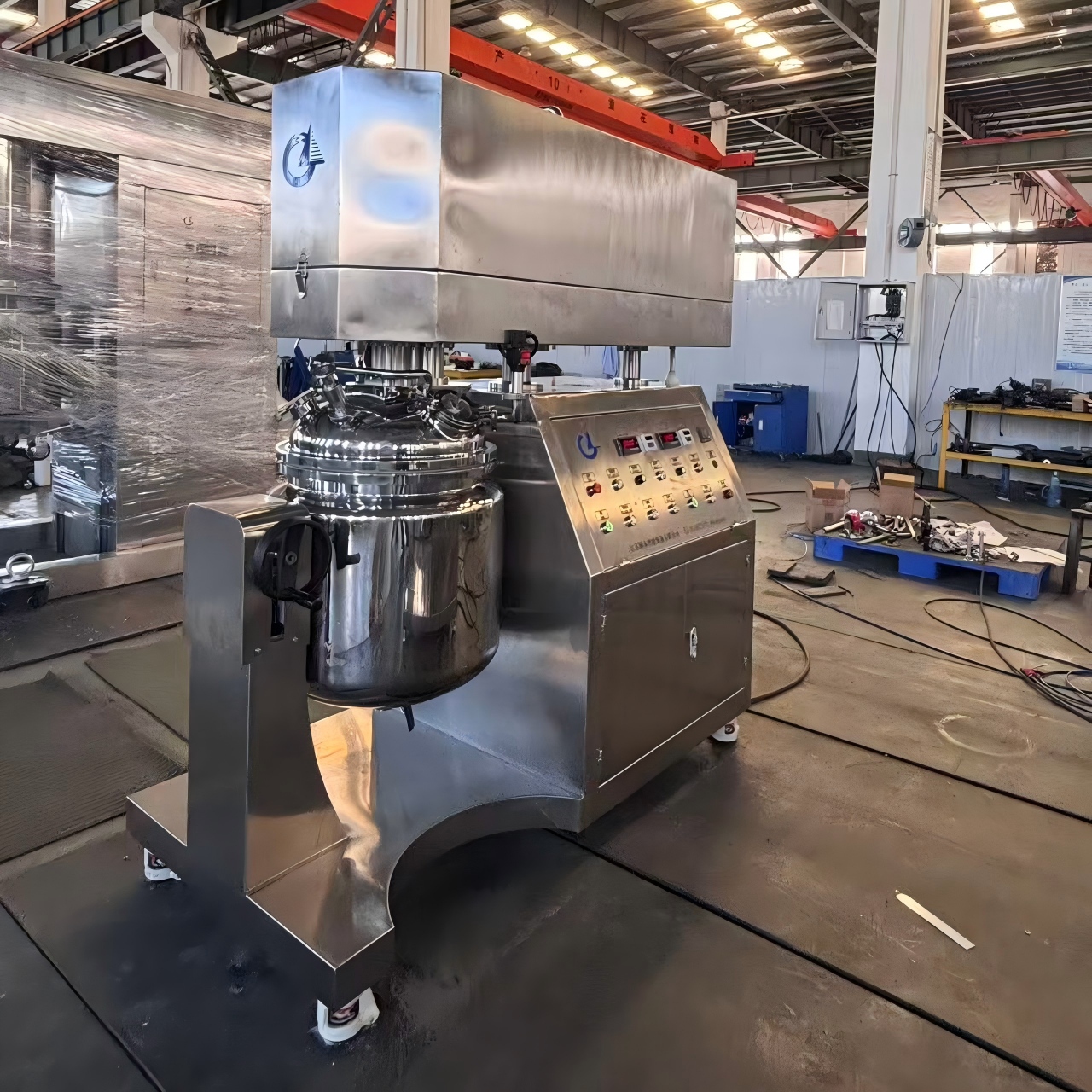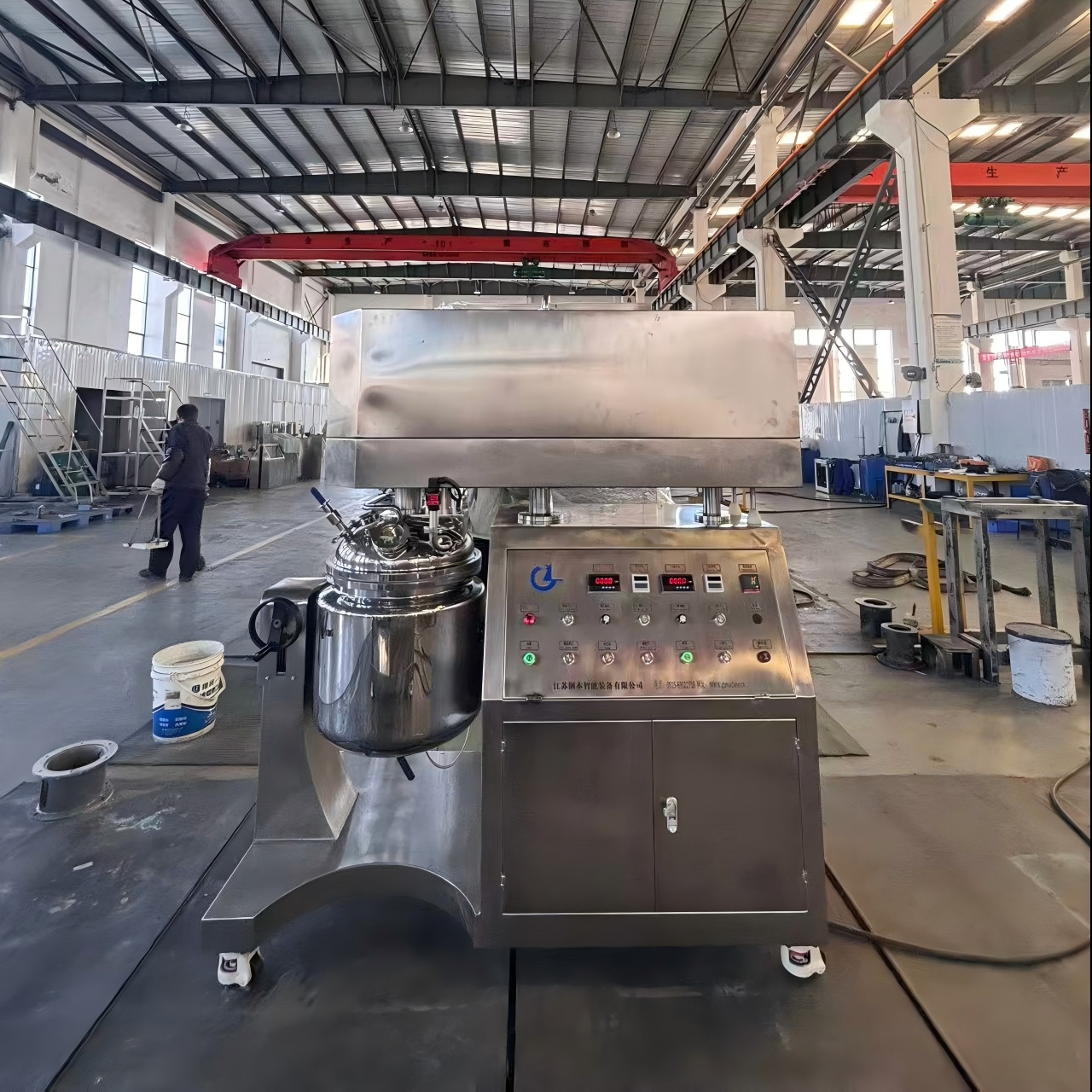Eliminating Air Bubbles: Vacuum Suction and Defoaming Technologies for Cosmetic Emulsions
In the production of cosmetic emulsions, the incorporation of air bubbles poses a critical challenge that directly impacts product quality. These bubbles not only mar the appearance with unsightly holes or a "foamy" texture, diminishing consumer appeal, but also accelerate the oxidation of active ingredients, leading to stability issues such as phase separation and deterioration. Addressing this industry-wide pain point, Jiangsu GangBen Mixer Manufacturer has pioneered an integrated solution by combining vacuum suction and defoaming technologies through its advanced Vacuum Emulsifying Mixers, setting a new benchmark for cosmetic emulsion manufacturing.
Vacuum Suction Technology: Preventing Bubbles at the Source
Traditional emulsion production processes are particularly vulnerable to bubble incorporation during the feeding of powdered ingredients, where dust dispersion often triggers turbulent mixing and air entrapment. GangBen's Vacuum Emulsifying Mixers eliminate this risk by employing a negative pressure system that creates a closed feeding environment. Operating at vacuum levels up to -0.08 MPa, the system uses vacuum suction tubes to directly transfer powdered raw materials—such as titanium dioxide—into the emulsification vessel without human intervention, thereby avoiding turbulence and bubble formation. For instance, GangBen's 50L Vacuum Emulsifying Mixer can complete the dust-free feeding of 5 kg of titanium dioxide in just 90 seconds, tripling the efficiency of manual feeding while reducing residual bubble content to below 0.05%.
This technology extends seamlessly to liquid raw material transfer. By integrating vacuum suction with sealed piping, both oil and water phases enter the emulsification vessel under negative pressure, significantly minimizing bubble generation during initial mixing. Laboratory tests conducted by GangBen demonstrate that emulsions produced using vacuum suction technology exhibit a 72% reduction in initial bubble volume compared to conventional methods, easing the burden on subsequent defoaming stages.
Vacuum Defoaming Technology: A Three-Dimensional Approach to Bubble Elimination
During the core emulsification phase, GangBen's Vacuum Emulsifying Mixers achieve deep defoaming through a synergistic combination of vacuum and high-shear mixing. The patented frame-type agitator and high-shear emulsifying head generate a three-dimensional flow field: the frame agitator rotates at 60–120 rpm to ensure macroscopic material circulation, while the high-shear head operates at line speeds of 2,800–4,000 rpm to produce micron-scale shear forces that break bubbles down to sizes below 10 μm. Simultaneously, the vacuum system activates at -0.095 MPa, causing the microbubbles to expand rapidly and rupture, with the released gases being evacuated by the vacuum pump.
In a case study involving the production of a premium face cream for an international brand, GangBen's 30L Vacuum Emulsifying Mixer reduced the emulsion's gas content from an initial 3.2% to just 0.08% in 15 minutes under conditions of 45°C and -0.09 MPa vacuum. This represents an 80% reduction in defoaming time compared to traditional atmospheric emulsification methods. Critically, the vacuum environment also suppresses the oxidation degradation of heat-sensitive active ingredients, boosting the retention rate of vitamin C to 98.5%.
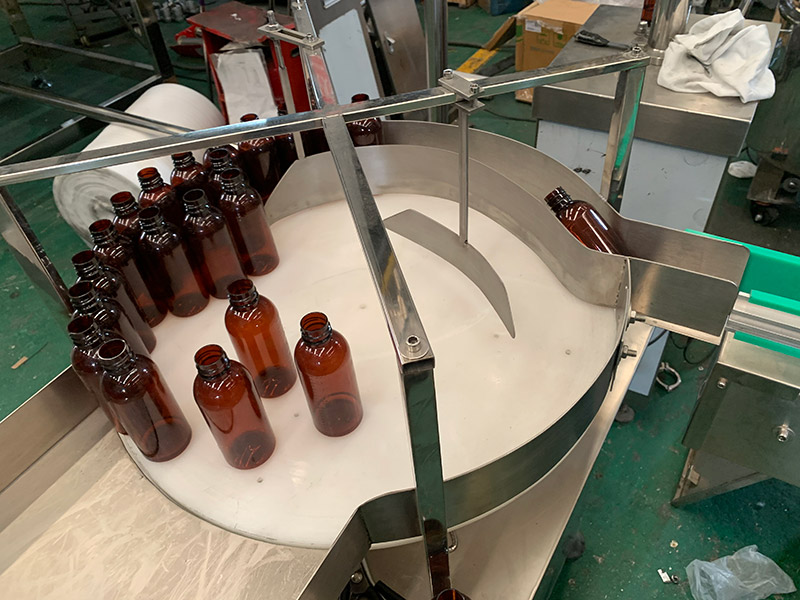
Chemical Defoaming Synergy: Enhancing Physical Defoaming Efficiency
While physical defoaming technologies have significantly improved emulsion quality, GangBen has further optimized the process for specialized formulations by developing chemical defoaming synergies. Its proprietary silicone-based defoaming agents can be added during vacuum emulsification to accelerate bubble collapse by reducing surface tension. Experiments show that a mere 0.1% addition of this defoamer enhances vacuum defoaming efficiency by 40%, making it particularly effective for high-viscosity (>50,000 cP) creams and lotions.
For exceptionally challenging water-in-silicone (W/Si) emulsions, GangBen employs a "two-stage defoaming process." The first stage involves primary emulsification and defoaming within the Vacuum Emulsifying Mixer, while the second stage utilizes an inline defoaming tank connected via piping to further remove residual bubbles through centrifugal separation and vacuum suction. This approach has successfully been applied in the production of a high-end sunscreen, increasing the product's light transmittance (a key metric for bubble content) from 82% to 97%.
Industry Adoption and Quality Transformation
GangBen's vacuum emulsification technologies have gained widespread adoption across the global cosmetics industry. A leading Korean beauty conglomerate reduced bubble-related defects in its foundation from 1.2% to 0.03% after implementing GangBen's 200L vacuum emulsification line, while extending product shelf life to 36 months. Similarly, a European dermocosmetics brand leveraged GangBen's customized Vacuum Emulsifying Mixer to stabilize the encapsulation of retinol, achieving a 27% increase in skin absorption rates in clinical trials.
From laboratory-scale R&D to large-scale commercial production, GangBen remains committed to the goal of "zero bubbles" by continuously refining its technological approach. Its Vacuum Emulsifying Mixer series, available in capacities ranging from 10L to 5,000L, supports the full spectrum of cosmetic products, from luxury skincare to mass-market color cosmetics. The modular design of these mixers enables rapid formula changes, catering to the industry's demand for "small-batch, multi-variety" production flexibility.
As the cosmetics industry strives for "perfect texture" and "long-term stability," Jiangsu GangBen Mixer Manufacturer's vacuum emulsification technologies are redefining emulsion production standards. By integrating vacuum suction, high-shear defoaming, and chemical defoaming agents, its equipment not only resolves the bubble challenge but also drives the industry toward greater efficiency, sustainability, and intelligence. As GangBen's Technical Director aptly puts it, "Vacuum is not merely about creating negative pressure; it's a sophisticated system that precisely controls airflow, shear forces, and chemical interactions." This philosophy continues to propel cosmetic emulsion manufacturing into the "zero-bubble era."
News
- Latest News
- Solutions
- FAQ
Recommend Products
-
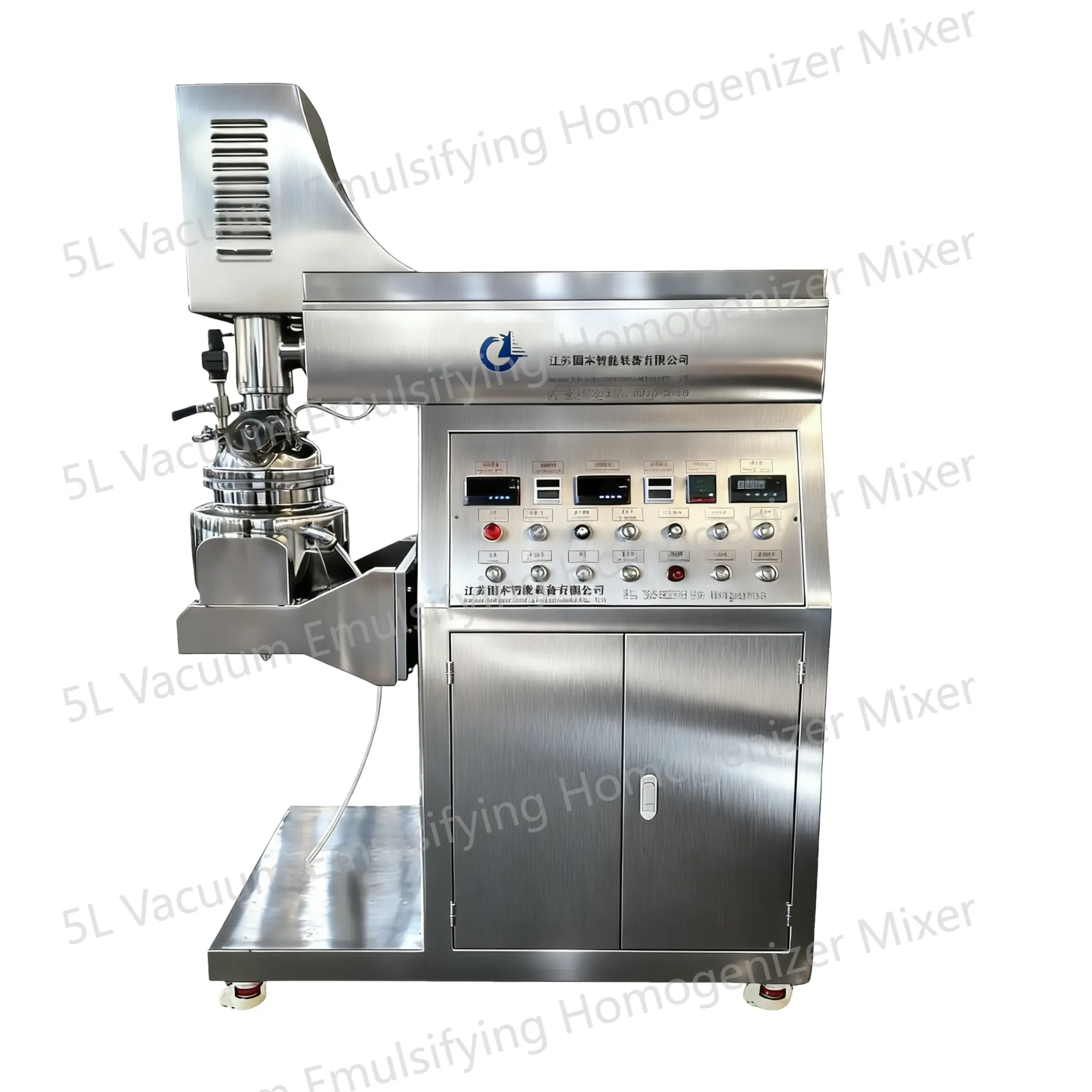 5L Vacuum Emulsifying Homogenizer Mixer
5L Vacuum Emulsifying Homogenizer MixerThe 5L vacuum emulsifying mixer is a device designed for emulsifying and mixing various substances in a vacuum environment. This equipment is equipped with a mixing tank with a capacity of 5 liters and is widely applied in industries such as food, pharmaceuticals, cosmetics, and pesticides.
-
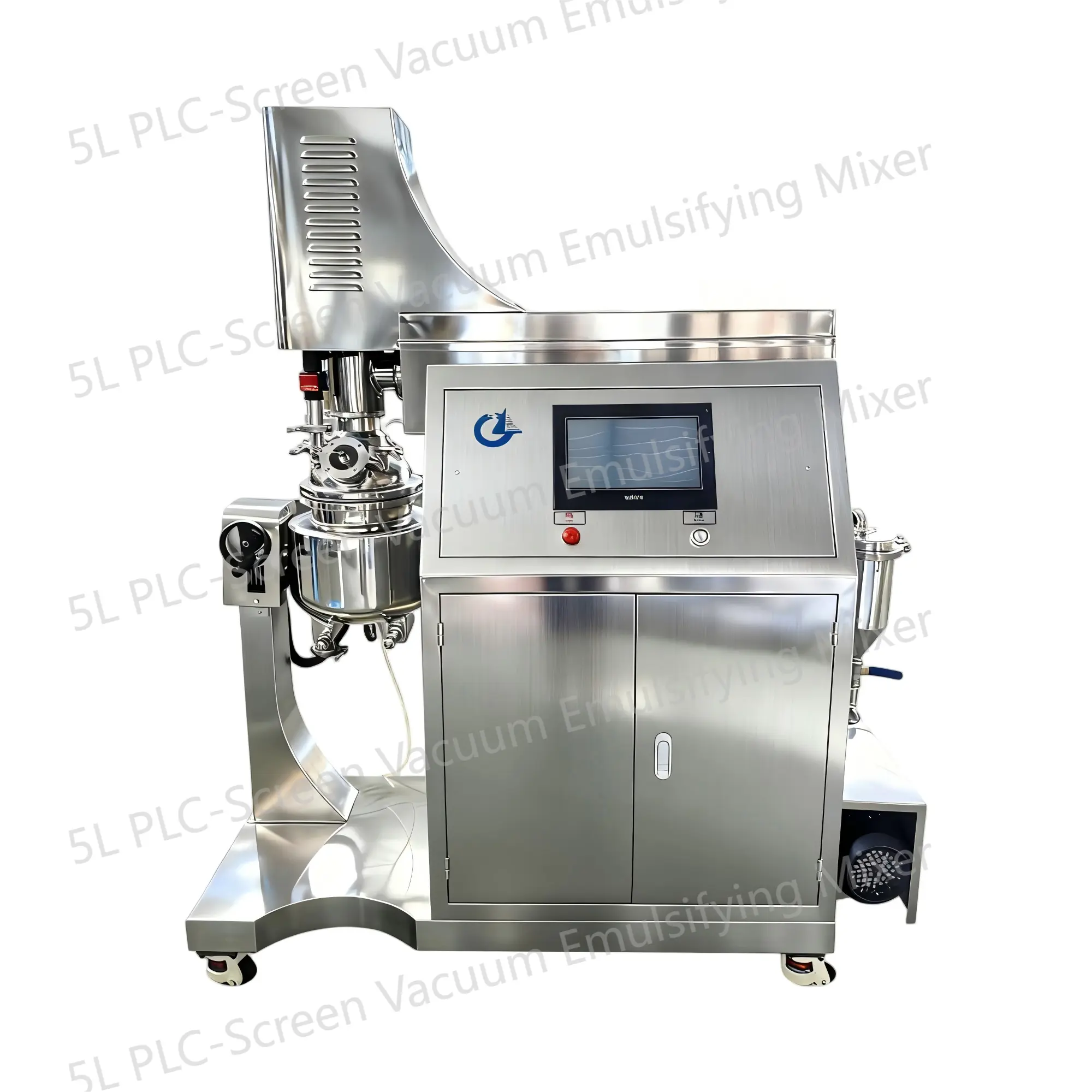 5L PLC-Screen Vacuum Emulsifying Mixer
5L PLC-Screen Vacuum Emulsifying MixerThe 5L PLC-Screen Vacuum Emulsifying Mixer is a device designed for emulsifying and mixing various substances in a vacuum environment. This equipment is equipped with a mixing tank with a capacity of 5 liters and is widely applied in industries such as food, pharmaceuticals, cosmetics, and pesticides.
-
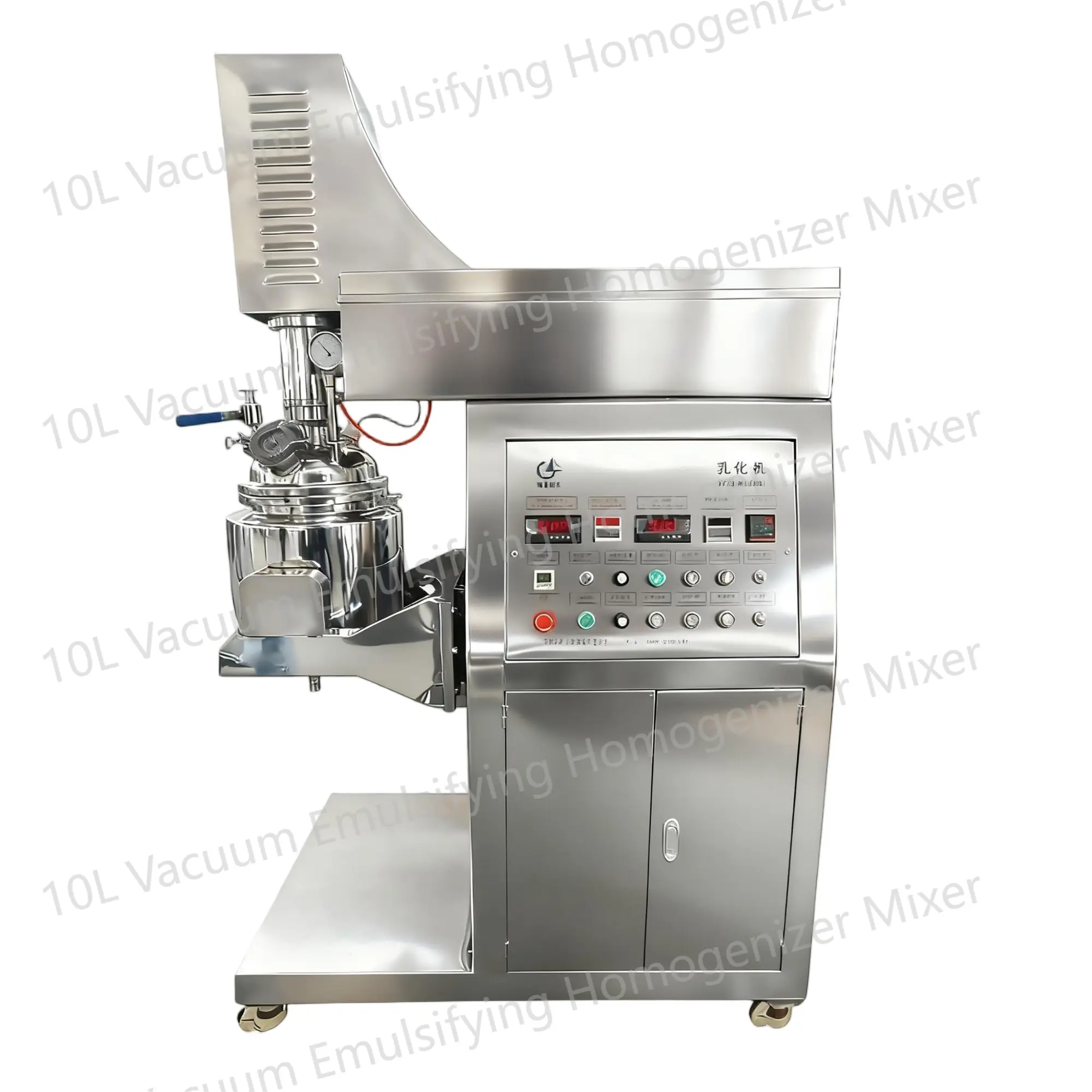 10L Vacuum Emulsifying Homogenizer Mixer
10L Vacuum Emulsifying Homogenizer MixerThe 10L Vacuum Emulsifying Mixer is a device used for emulsifying and mixing various substances in a vacuum environment. It is commonly used in industries such as food, cosmetics, and pharmaceuticals.


 English
English Russian
Russian French
French Spanish
Spanish Portuguese
Portuguese Korean
Korean Japanese
Japanese Thai
Thai